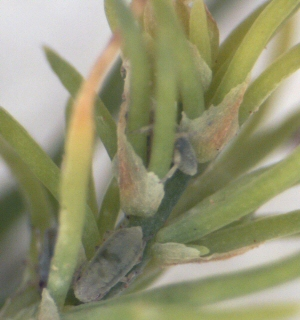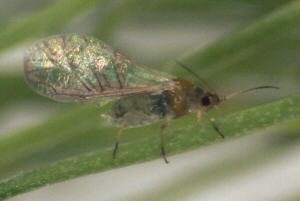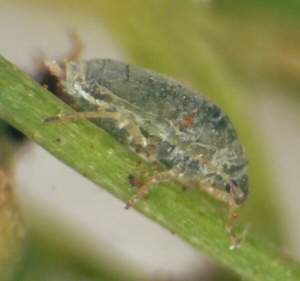Asparagus Aphid
 Causal Agent
Causal Agent
Brachycorynella asparagi
Host
Asparagus is the only known food plant of this aphid.
Symptoms
Asparagus aphids feed in the axils of the modified leaves and under bracts. Heavily
infested seedlings may form rosettes or shrivel and die. Similar infestations on older
plants may cause severe 
Life Cycle

Description
This is a small, slender aphid about 1/32 to 1/16 inch long. It is green to gray-green in color and is more or less covered with a gray, powdery material. The cornicles are very small and difficult to see without considerable magnification. The winged forms are darker, almost black, in color.
Control
Please contact your local county extension office for current information.

